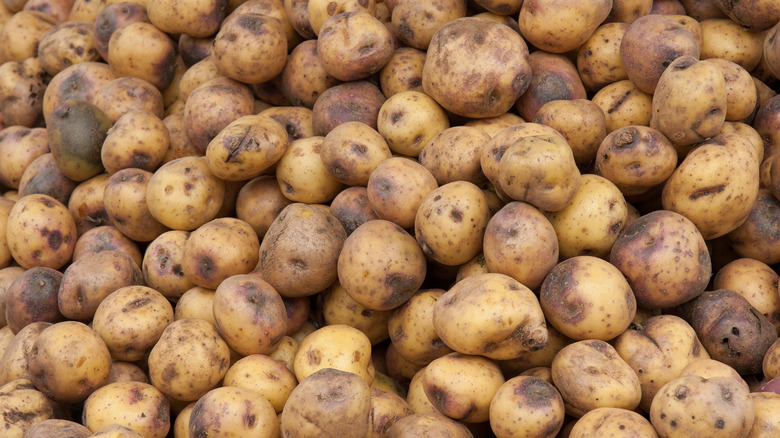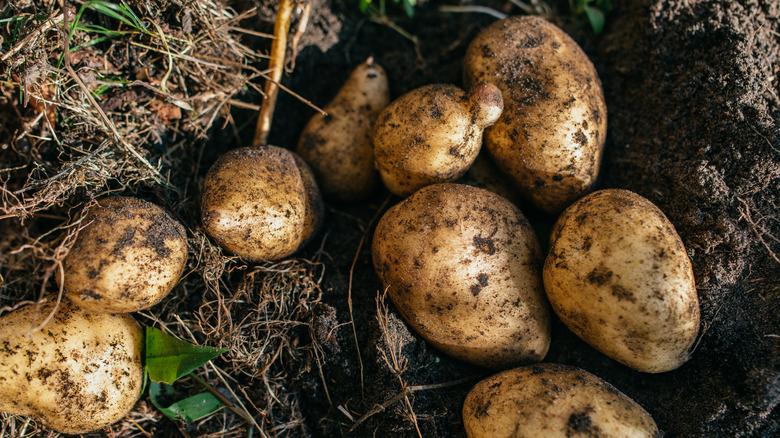Dark Spots On Your Potatoes? Here's What's Causing Them
Ah, the humble potato. As the hobbits once said, "Boil 'em, mash 'em, stick 'em in a stew" — the possibilities are endless. All too often, though, you might see dark spots on your potatoes. Don't worry, they're harmless so the potato is still edible. Aptly called "blackspots," those black spots are just bruises from where the potato was injured any time between harvesting and getting stocked in grocery store bins.
When a potato is banged up, the cells inside get damaged. This triggers a reaction where a natural compound called tyrosine reacts with the potato's enzymes and oxygen from the air to produce melanin (yes, the same pigment found in human skin), which causes the discoloration. The bruise usually forms 24 to 72 hours after impact, which is why you might not notice it right away. When you're ready to prepare your bruised potato, all you need to do is cut out the spot.
What do you do when you use your peeler to remove a bruise only to reveal textured hole that looks like something shriveled up and died? This moldy-looking internal black spot is from a condition called fusarium, which can develop from an existing bruise. As with the aforementioned potato affliction, this condition does not render taters inedible or unsafe — you just need to cut them out.
The National Potato Anti-Bruise Committee
Bruised potatoes aren't an issue when cooking, but they can affect the economy when consumers choose not to purchase visibly damaged potatoes in stores. A great deal of education, experience, biology, chemistry, physics, and logistics go into producing and distributing the food we eat. There are countless farmers and agriculture experts, including the National Potato Anti-Bruise Committee of the Potato Association of America, working hard to make sure we receive the best possible produce.
Several factors indicate whether a potato is susceptible to bruising, including calcium, nitrogen, potassium, and water levels; the potato vines themselves when the tuber is harvested; and the temperature before, during, and after harvest. These elements can be managed with soil monitoring, temperature regulation, advancements in farming machinery, and more.
So the next time you go to discard a visibly damaged potato, think again. Once you recognize that you just need to cut out the discoloration, an entire universe of potato possibilities awaits, including these potato recipes, from mashed to hashed. To keep your potatoes as healthy as possible before consuming them, refer to these helpful potato storage tips. The most important one? Well, when it comes to storage, onions and potatoes should break up.

